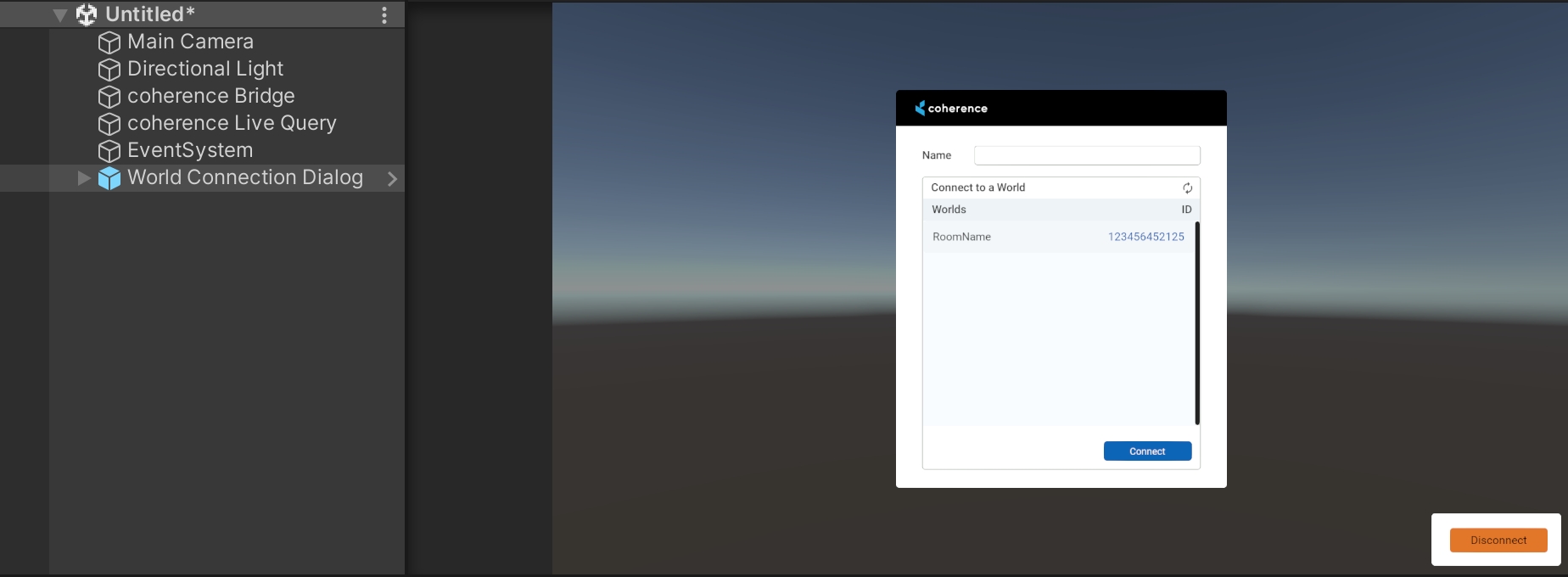Scene setup
One of the first steps in adding coherence to a project is to setup the scene that you want the networking to happen in.
Video tutorial
The topics of this page are covered in the first minute of this video:
Step by step
Preparing a scene for network synchronization requires to add three fundamental objects:
1. Add a CoherenceBridge
In the top menu: coherence > Scene Setup > Create CoherenceBridge

This object manages the connection with coherence's relay, the Replication Server, and is the centre of many connection-related events. No particular setup is required now, but feel free to explore the options in its Inspector.
2. Add a LiveQuery
In the top menu: coherence > Scene Setup > Create LiveQuery

Creates a LiveQuery, which allows to define what part of the world the Client is interested in when requesting data from the Replication Server. You can surround your entire scene in one query, or can attach it to an object such as the player or to a camera.
While LiveQueries are an optimisation tool, having at least one LiveQuery is necessary.
3. Add a Connect dialog UI
In the top menu: coherence > Explore Samples

A Connect dialog UI provides an interface to the player to connect to the Replication Server, once the game is played. You can create your own connection dialog, but we provide a few samples as a quick way to get started. Read more in the section dedicated to Samples.
... and you're done!
For a simple setup, there's nothing else you need to do to setup a scene. Now, it's time to setup some Prefabs!
Was this helpful?

